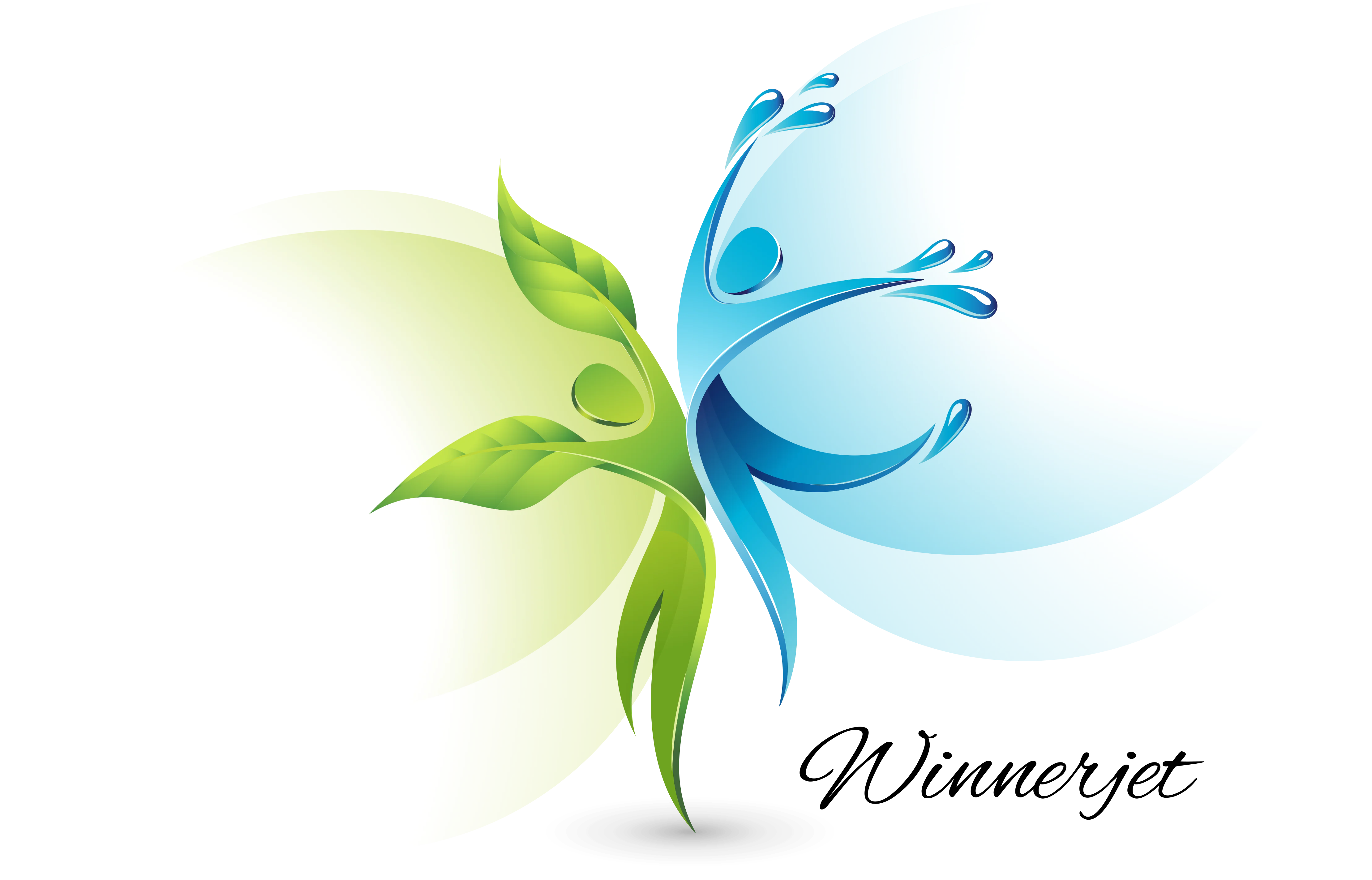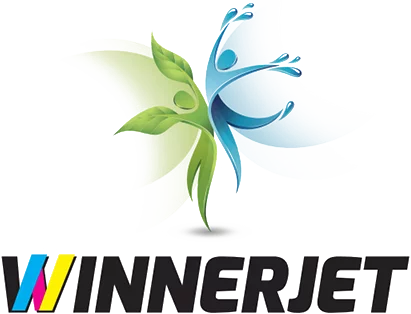What are DTF printers?
DTF Printer is a unique device that uses DTF ink to print designs onto DTF transfer film, then uses DTF hot melt powder and heat from a heat press to transfer the design onto the fabric, printing brightly colored, long-lasting patterns.
Core Components of a DTF Printer
- Printhead: The precision engine of the DTF printer, responsible for depositing ink droplets onto the film in a controlled manner.
- Ink Supply System: How the ink is stored, mixed (if necessary), and delivered to the printhead to ensure consistent ink flow.
- Feeder: The system handles the DTF transfer film and ensures that the film passes smoothly and accurately through the printer.
- Control System: The brains of the DTF printer, including the computer interface and Software that sends commands to the printer components.
- Heating Element: A component that can dry ink immediately after printing to prevent smudging and ensure adhesion.
- Curing Device: If applicable, a system that uses heat or ultraviolet light to cure ink for long-lasting print results.
Setting Up the DTF Printer
Installation Procedure
- Unpacking: Carefully unpack all packaging materials.
- Connecting Power and Network: If necessary, plug in the power supply and set up the network connection.
- Load Ink and Film: Install the ink cartridges and feed the PET film into the printer.
- Install Software: install the necessary drivers and Software on your computer.
- Calibrate and test print: make a test print to ensure everything is aligned.
Common Setup Problems
- Ink Flow Problems: Ensure the ink cartridges are installed correctly and unclogged.
- Film alignment: Adjust the rollers to prevent film jams.
How DTF Printers Work
Preparation of necessary accessories and materials

- Automatic Powder Shaker: The hot melt powder covers evenly on top of the printing pattern.
- Curing Oven: used to cure the hot melt adhesive powder on the pattern.
- Heat Press Machine: used to add heat transfer film to transfer the pattern onto the fabric.
- DTF Ink: special ink for the DTF printer used to print the design.
- DTF Film: the medium used to print the design.
- DTF Powder: is used to adhere to the design of the transfer film
Printing Process
- Design Preparation: Designs are created using Software to ensure that they are high-resolution and formatted correctly for printing.
- Printing: Print the design onto a particular DTF film using a DTF printer and compatible inks.
- Covering Powder: Apply hot melt powder evenly over the wet ink on the transfer film. Shake off excess powder to ensure a clean transfer.
- Heat Transfer: Heat the heat press to approximately 320°F or 160°C. Then, place the film on the fabric and press with medium pressure for 20-30 seconds.
- Peel Finish: Allow the transfer to cool, and then peel off the film, leaving the design on the fabric.
Read ‘What Is DTF Printing‘ for a more detailed description of the DTF printing process.
Classification of DTF Printers
Desktop DTF Printer

- Print size: Usually up to A3 or A4, with more print film.
- Famous Brand: Epson (conversion model) L1800 L805 8550 XP-1500.
- Price: Generally from $500 to $2000.
- Pros: compact, space-saving, affordable, easy to use, suitable for small batch production.
- Cons: Slower print speeds are limited to smaller print sizes and are less rugged.
Commercial DTF printers

- Print size: Maximum 24 inches wide, typically prints on 30CM 33CM 42CM 60CM rolls.
- Famous brands: STS, Audley.
- Price: Typically between $3,000 and $10,000.
- Pros: Faster speeds and larger print sizes for medium-volume production.
- Cons: Higher initial investment cost, more space required, more complex operation.
Industrial DTF Printer

- Print size: Widths over 24 inches, can handle rolls of fabric.
- Famous brands: Mimaki, Mutoh.
- Price: Typically $10,000 and up.
- Pros: Versatile, supports multiple printing methods, High-speed printing, suitable for mass production, durable and reliable.
- Cons: Large initial investment, requires a lot of space, high cost and technical requirements, and complex maintenance.
How DTF Printers Differ from Other Printers
DTF printers versus DTG and sublimation printers each have pros and cons. Follow along as we explore how to find the best machine for your business.
| Aspect | DTF Printer | DTG Printer | Sublimation Printer |
| Applicable Materials | Cotton, polyester, blends, and more | Primarily cotton and cotton blends | Polyester and polymer-coated materials |
| Print Quality | Vibrant, durable, works well on dark fabrics | High-quality, vibrant colors, best on light fabrics | Bright colors, limited to light-colored polyester |
| Printer Steps | Print on film, apply powder, heat transfer | Direct print, heat cure | Print on paper, heat transfer |
| Price Range | $500 – $15,000+ | $3,000 – $20,000+ | $300 – $3,000+ |
| Ease of Use | Moderate learning curve | It can be complex, requires fabric pretreatment | Generally easy, straightforward process |
| Business | Small to large scale, versatile products | Medium to large scale, apparel-focused | Small to medium-scale promotional items |
| Maintenance | Regular cleaning, powder handling | Regular cleaning, pretreatment machine maintenance | Minimal, primarily print head cleaning |
| Other Aspects | No pretreatment is required; versatile applications | Require pretreatment, and it is limited to certain fabrics | Limited material compatibility requires special paper |
Advantages of DTF Printer

- Wide range of material usage. Compatible with a wide range of fabrics, including cotton, polyester, silk, nylon, leather, and blends. Suitable for light and dark-colored fabrics.
- High-quality prints. Vibrant and highly reproducible colors. It is long-lasting and durable enough to withstand washing, wear, and tear.
- Wide range of applications. It can be used for clothing customization, promotional products, home decorations, personalized small gifts, etc.
- Cost-effective. No need to pre-treat fabrics, reducing preparation costs and time. Cost-effective initial investment and long-term savings.
Disadvantages of DTF printers

- Initial investment cost. The higher upfront cost of equipment and associated consumables.
- Maintenance requirements. Regular cleaning of printheads to prevent clogging. Requires ongoing calibration and maintenance.
- Complex learning curve. Requires learning time and multiple practice sessions to master the process and achieve optimal results.
- Environmental impact. Uses of adhesive powders and films can be wasteful. Careful handling of consumables is required.
- Space requirements. Large machines and equipment in the industrial sector can take up a lot of space, especially in small work areas.
DTF Printer Applications in Various Industries

- Customized clothing: DTF printers excel in producing personalized T-shirts, sweatshirts, and other garments.
- Curtains and upholstery: Customers can print customized designs on curtains, sofa covers, and other home textiles.
- Promotional Merchandise: Creates promotional products such as T-shirts, hats, and bags with company logos or slogans for events, trade shows, and marketing campaigns.
- Customized giveaways: Provide giveaways personalized to the recipient’s preferences or the event’s theme.
Choosing the right DTF printer for your organization

Factors to consider when investing in a DTF printer
- Business needs assessment: Evaluate the needs of your target market, including the volume of prints, the types of materials that are hot sellers, and the turnaround time required.
- Print quality requirements: Determine the level of detail and color accuracy required for your product, as this will influence the type of DTF printer you should invest in.
- Space and infrastructure: Consider the physical space available for the DTF printer and any necessary infrastructure, such as ventilation and power.
- Technical compatibility: Ensure that the DTF printer is compatible with existing design and production Software and any other equipment used in the workflow.
Comparing DTF printer models and features
- Printer specifications: Compare the technical specifications of different brands of DTF printer models, including print resolution, speed, color gamut, and compatible ink types.
- Size and type: Consider the size and type of printer, whether it is a desktop model for smaller spaces or a large industrial model for higher throughput.
- Scalability and Expandability: Look for printer models that are scalable or expandable to meet future business growth.
Calculating DTF Printer Budget and Ongoing Costs
- Initial Investment: Establish a budget for the initial purchase of a DTF printer, considering the various models available and their respective prices.
- Operating Costs: Consider operating costs, including the cost of DTF inks, transfer films, and any other materials required in the printing process.
- Maintenance and repair: To ensure your DTF printer’s longevity and optimal performance, budget for regular maintenance and potential repair costs.
- Training and support: Calculate the cost of training staff to use DTF printers effectively and the cost of any ongoing support or service agreements with the manufacturer.
Choosing the right DTF printer for your business requires thoroughly analyzing the target market and operational requirements, comparing available models, and carefully budgeting initial and ongoing costs. Making an informed decision will help improve the success and efficiency of your business.
DTF Printer Care and Maintenance

- Regular Cleaning: Perform a routine cleaning schedule of the printer, including wiping down external surfaces and cleaning the print head to prevent clogging.
- Ink System Maintenance: Check the ink supply system to ensure no air bubbles and continually monitor ink levels to avoid running out of ink that could affect printing.
- Firmware Updates: Keep printer firmware up-to-date for optimal printing results.
- Environmental controls: Maintain a working environment with appropriate temperature and humidity to prevent ink from drying out or printer components from being damaged.
- Proper Storage: Store the DTF printer properly to prevent dust and environmental factors from affecting its performance.
- Regular maintenance: Follow the manufacturer’s recommended maintenance schedule, which includes deep cleaning and inspection of the printer components.
- Use original parts: Use only original or manufacturer-approved parts and supplies to ensure compatibility and prevent damage to the printer.
- Preventive Inspections: Preventively inspect moving parts for wear and replace them before they fail to prevent further damage.
By following these maintenance and care practices, you can extend the life of your DTF printer and ensure that it continues to print high-quality documents that meet your business needs.
What can Winnerjet offer?

As a printing solution provider, Winnerjet provides supporting printing equipment and consumables for our DTF printing solution. Including a DTF printer, automatic powder shaking machine, curing oven, heat press machine, DTF ink, DTF film, DTF hot melt powder, and other accessories. You can visit our store at www.winnerjet.com for more information or contact us for technical support.
Conclusion

DTF printers offer a flexible and efficient solution to customized printing needs, making them an excellent way for businesses to expand their reach and improve production workflows. Don’t hesitate to contact us for technical and product support to get started.
FAQS
How can I avoid clogging of the print head?
Tackle print head clogging by performing regular cleaning cycles and using appropriate cleaning solutions when necessary.
How do I resolve color output inconsistencies?
Resolve color inconsistencies by calibrating the printer and ensuring that high-quality inks and profiles are used.
What if the paper feed is not aligned?
Resolve paper feed issues by checking the alignment of the transfer film and ensuring that the rollers are clean and working correctly.
What about misaligned and blurred print?
Correct any misalignment or blurring by adjusting the printer settings and ensuring the printer is stable during operation.


